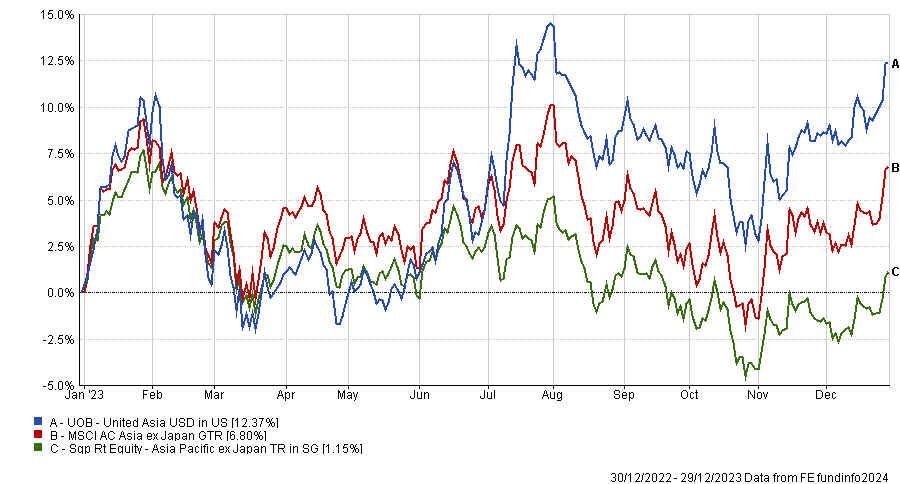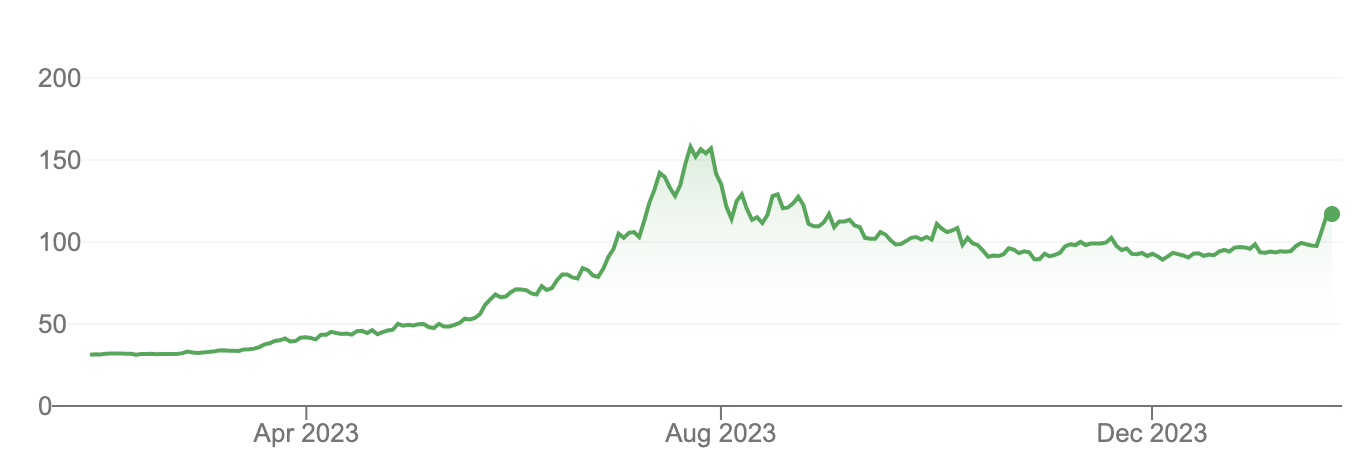While investors rushed into the ‘Magnificent Seven’ on the back of hype surrounding the potential of artificial intelligence (AI) in 2023, UOB Asset Management’s Asian fund managers were already a few years into using AI to help them pick winning stocks.
The firm says Asia is a fertile hunting ground for AI and Machine Learning (ML) tools because of the sheer size of the market (there are over 30,000 listed companies in the Asia Pacific universe) relative to the small number of investment research houses covering it.
Their AI tool enables the firm to cover all of them, using billions of data points ranging from company fundamentals and economic trends to stock market movements and technical analysis.
Since implementing AI into its investment process in the fourth quarter of 2020, the UOB United Asia fund has delivered top-quartile performance relative to its peers. But last year is where the approach really shined, after it almost doubled the return on its benchmark in 2023.

One of the fund’s top picks in 2023 was Taiwan-listed stock Wistron, which was flagged by the firm’s model in April 2023.
At the time, the company was only known as an assembler of PCs, laptops and servers UOB Asset Management’s head of investment technology Paul Ho (pictured) told FSA.
But the firm’s model picked up a change in the stock’s earning forecast and a change in its trading pattern.
This, combined with macro indicators suggesting a market environment favoring Taiwan and tech stocks more broadly, prompted the fund managers to assign its human analysts to start due diligence.
Ho said: “As part of our AI-Augmentation process, our analysts conducted in-depth research and to our surprise, the company was the sole supplier of a certain company called Nvdia which was seeing tremendous growth due to the demand for its AI chips.”
The fund bought the stock in the same month at NT$43 before it went parabolic, prompting the managers to sell the stock at $140 three months later.
“This was just one example of how the model was able to trawl the entire investment universe for some of the best opportunities so that our analysts can focus our research efforts on these high potential targets,” Ho said.
Share price of Winstron over 1 year (NTD)

However, he was quick to add that the firm doesn’t simply use AI to help generate stock ideas.
“Our model also enables us to optimise our portfolio by allocating appropriate weights to each stock, although we have limits in place for risk management purposes,” he explained, adding that this optimization also contributed to the fund’s outperformance.
Another facet of the AI tool that has helped is the fact that it doesn’t respond to real-time events like Covid-19 or major financial crises in the same way a human brain does.
“Unlike a human being, the model does not make decisions based on narrative or labels,” Ho said.
“From the model’s point of view, there are markets that have drawn down by 30%, 50% or 80%. The label we assign to these events can be Asia Financial crisis, Euro-Debt crisis, Covid, etc.”
“So from that perspective these markets draw from past events and the model will use past data to predict which stocks/asset class will do well in that context.”
He suggested that this objectivity is one reason why their two AI-driven funds have done well in recent years – despite an event such as Covid-19 not having any precedence.

















